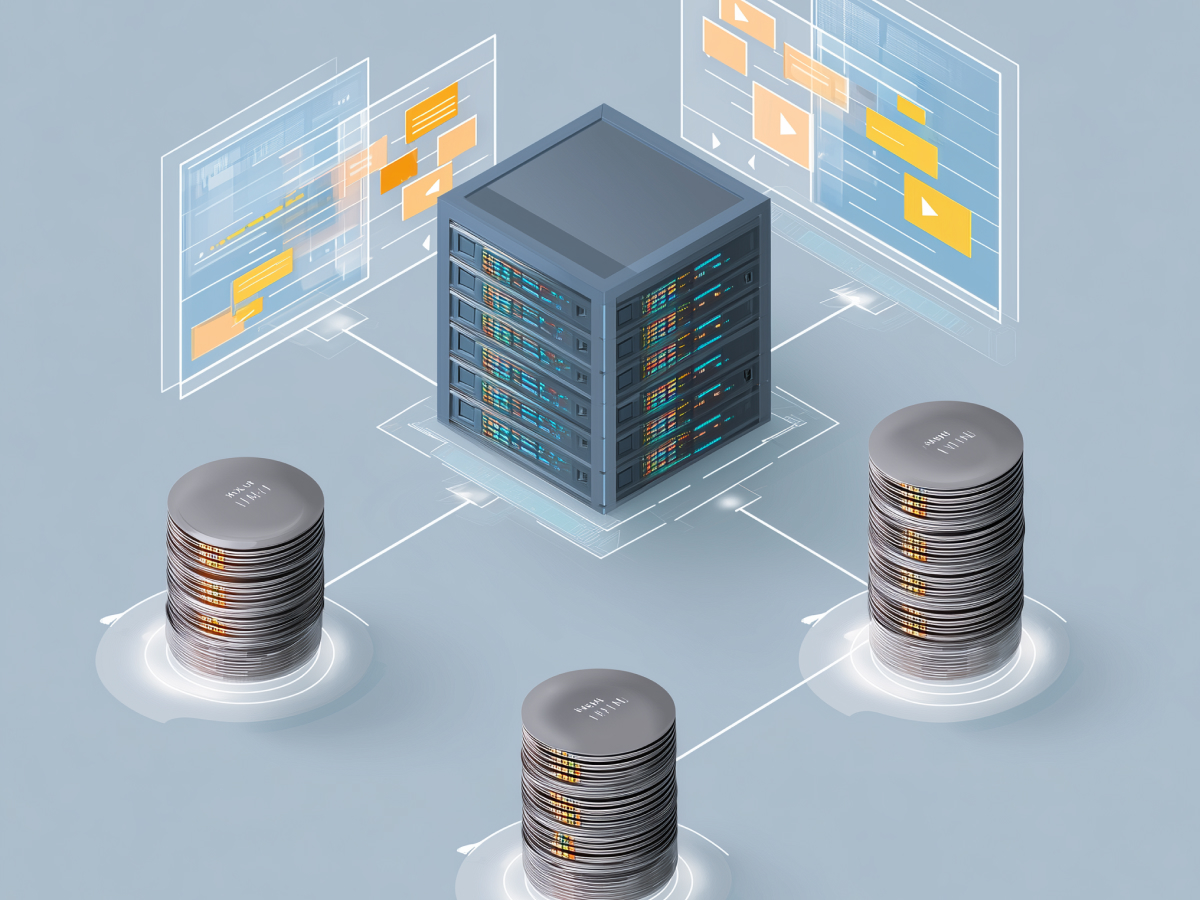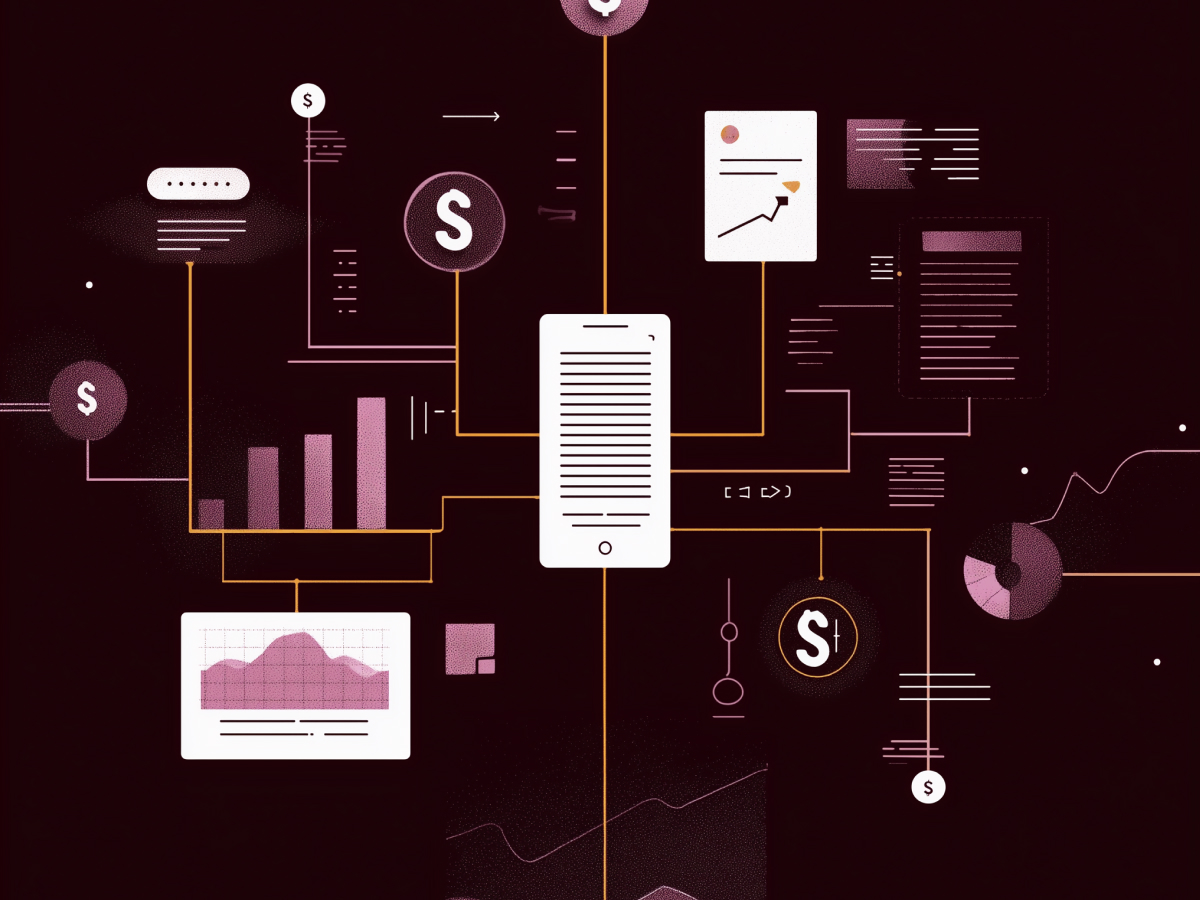Understanding multi-tenant architecture and its dominance in today’s digital world
Multi-tenant architecture is at the core of modern cloud computing and SaaS environments, where a single instance of software efficiently supports multiple user groups, or tenants. Each tenant operates with isolated data and configurations, yet shares underlying resources like servers and storage.
This architecture streamlines resource management and improves both scalability and operational efficiency, making it a powerful framework for businesses operating at scale.
In a multi-tenant setup, the system is engineered to deliver tailored services to different tenants without requiring multiple infrastructure instances. It’s particularly beneficial in scenarios where businesses need to scale quickly while maintaining high levels of customization and data security. As a result, multi-tenant architecture has become a dominant pattern in the tech industry, particularly in cloud-based solutions and SaaS platforms.
Why multi-tenant architecture is everywhere in the cloud
The prevalence of multi-tenant architecture in today’s cloud-driven landscape stems from its leading efficiency in delivering scalable services. In cloud computing and SaaS applications, this architecture is key to maximizing resource utilization and minimizing costs.
Providers can serve multiple customers on a shared infrastructure, reducing the need for dedicated hardware and simplifying maintenance.
Multi-tenant architecture also supports rapid growth, letting businesses add new tenants without major changes to the underlying infrastructure. The ability to isolate data and workloads for each tenant while sharing resources further boost the architecture’s appeal, making it the go-to solution for modern digital enterprises.
5 powerful advantages of implementing multi-tenant architecture
1. Workload isolation keeps your tenants happy and your systems running smoothly
The system makes sure each tenant operates in a siloed environment, preventing the “noisy neighbor” problem, where one tenant’s excessive resource usage could degrade the performance for others.
Isolation protects service quality and lets providers offer tiered services based on tenant needs, making sure high-paying customers receive the performance levels they expect.
Effective workload isolation also supports more predictable system behavior, which is critical for meeting service-level agreements (SLAs) and maintaining customer trust. In environments where multiple tenants share the same infrastructure, the ability to isolate workloads makes sure that resource contention is minimized, ultimately leading to a more reliable and responsive system.
2. Data privacy and compliance in a multi-tenant world
Each tenant’s data must be isolated to maintain operational efficiency, while adhering to strict regulatory standards. Global regulations such as GDPR, HIPAA, and CCPA impose stringent requirements on data handling, and failure to comply can result in severe penalties.
Multi-tenant systems address this by implementing comprehensive access controls, encryption, and data segregation techniques that make sure each tenant’s data is securely stored and processed.
These measures also help in building up customer confidence, as businesses can assure their clients that their data is protected from unauthorized access or breaches. As the quantity and severity of data breaches grow, the ability to guarantee data privacy through a well-designed multi-tenant system is a competitive advantage that can set a business apart.
3. Slashing costs while maximizing efficiency in multi-tenant architectures
Cost efficiency is one of the most compelling reasons for adopting multi-tenant architecture. Businesses share infrastructure and resources across multiple tenants to achieve larger cost savings—eliminating the need for dedicated hardware for each tenant, reducing capital expenditure and operating costs.
Centralized resources management leads to lower maintenance and support expenses, further improving the cost-effectiveness of the architecture.
For businesses, especially those operating in competitive markets, these cost savings can translate into more competitive pricing, higher profit margins, or reinvestment in innovation. Being able to deliver high-quality services at a lower cost is a strategic advantage that can help companies maintain or even grow their market share.
4. Simplify system maintenance with centralized multi-tenant management
In a traditional multi-instance setup, updating or maintaining each instance separately can be time-consuming and error-prone. Multi-tenant systems, on the other hand, allow for centralized updates and maintenance—reducing the time and effort required to keep the system up-to-date while guaranteeing consistency across all tenants.
With centralized management, IT teams can deploy updates, apply security patches, and perform system optimizations with minimal disruption to tenants, reducing the likelihood of downtime, and making sure the system remains reliable and secure for all users.
5. Accurate scaling: How multi-tenant architecture grows with your business
As businesses grow and the number of tenants increases, the architecture can easily scale without requiring a complete overhaul of the infrastructure—achieved through efficient resource management and the ability to dynamically allocate resources based on tenant demand.
For growing businesses, this means they can onboard new customers quickly and efficiently without compromising performance or incurring significant additional costs. The architecture’s inherent scalability also supports innovation, so that businesses can introduce new services or expand into new markets without being heavily constrained by their IT infrastructure.
Real-world use cases that showcase the impact of multi-tenant architecture
How SaaS platforms like Salesforce leverage multi-tenant architecture to serve millions
SaaS platforms like Salesforce and Shopify are prime examples of how multi-tenant architecture can be leveraged to deliver scalable, customizable services to a vast customer base.
These platforms support millions of businesses on a single, shared infrastructure, letting each company access and manage its data and workflows in a tailored environment.
These platforms use multi-tenant architecture to offer different service tiers, from basic to premium, letting businesses of all sizes find a solution that fits their needs.
Being able to customize services while maintaining a shared infrastructure is a key factor in the success of these platforms. For instance, Salesforce offers extensive customization options, letting businesses tailor the platform to their unique requirements, all while benefiting from the efficiency and scalability of a multi-tenant system.
Why multi-tenant architecture is their “Secret Weapon”
PaaS platforms like AWS Elastic Beanstalk and Microsoft Azure use multi-tenant architecture to support a broad range of users with diverse application needs. These platforms provide the underlying infrastructure and tools necessary for developers to build, deploy, and manage applications, all within a shared environment.
The multi-tenant design lets these platforms efficiently allocate resources across users, making sure each application runs smoothly without requiring dedicated hardware.
For businesses, the multi-tenant architecture of PaaS platforms translates into lower costs and faster time to market. Developers can leverage the shared resources to quickly deploy applications, scaling them as needed without worrying about infrastructure constraints.
How large corporations use multi-tenant architecture to manage complexity and cut costs
In large corporations, multi-tenant architecture is often used to manage separate divisions or departments under a unified IT infrastructure—simplifying resource management, as all departments share the same underlying infrastructure while maintaining their own isolated environments.
Through centralizing IT resources, corporations can achieve economies of scale, reducing overall costs while improving operational efficiency.
For example, a multinational corporation might use a multi-tenant architecture to manage its HR, finance, and operations departments on a single platform. Each department operates independently but benefits from shared resources, such as data storage and processing power—reducing costs and facilitating better data integration and collaboration across the organization.
Powering multi-tenant data access with smart, secure data serving platforms
Data serving platforms that use multi-tenant architecture are key in scenarios where multiple tenants need access to shared data sets. These platforms are designed to manage and deliver data efficiently, making sure each tenant has secure access to the information they need while maintaining strict data segregation and privacy controls.
Through customizing access controls and data views based on tenant-specific requirements, these platforms make sure each tenant interacts with the data in a way that meets their specific needs, without compromising the security or integrity of the overall system.
What SaaS providers need to know about multi-tenant data management
SaaS providers face unique challenges in multi-tenant data management, particularly when dealing with a high number of tenants, as seen in freemium models. In these environments, the architecture must be robust enough to support thousands or even millions of users without sacrificing performance or security.
The biggest challenges facing SaaS multi-tenant data management
In a SaaS environment, where tenants may belong to different industries with varying regulatory requirements, it’s typically a priority to keep each tenant’s data securely separated from others. This is especially important in industries like finance and healthcare, where data breaches can result in serious legal and financial repercussions.
Another major challenge is workload isolation. As tenants can have vastly different usage patterns, the system must be capable of handling these variations without one tenant’s heavy usage impacting others, requiring careful resource allocation and monitoring to maintain service levels across all tenants.
Requirements for effective SaaS multi-tenant data management
To address these challenges, SaaS platforms must implement stringent data isolation and workload isolation strategies. Data isolation is achieved through techniques such as encryption, access controls, and separate databases for each tenant.
Workload isolation is managed through resource quotas, monitoring, and dynamic resource allocation, making sure each tenant receives the appropriate level of service.
The architecture must support tenant tiers and priorities, allowing for differentiation between free and premium customers. This typically requires flexible resource management that adapts to different service levels without compromising the overall performance of the platform.
Key considerations for scaling and securing SaaS multi-tenant platforms
As the customer base grows, the architecture must be able to scale horizontally, adding new resources without requiring major changes to existing infrastructure—supported by flexible resource management, automated provisioning, and efficient use of cloud services.
Customization is another key factor to consider, as SaaS platforms must allow tenants to tailor the service to their specific needs. This typically involves custom branding, workflows, or features, all of which need to be supported without impacting the core functionality of the platform.
Overcoming the challenges of multi-tenant centralized storage platforms
Centralized storage platforms in a multi-tenant environment face several challenges, primarily due to the differing data models and access patterns of different applications. Each application may have unique requirements for data storage, retrieval, and processing, which can complicate the management of a shared storage platform.
One of the main challenges is making sure the storage system can scale horizontally to accommodate growing data volumes from multiple applications. This requires robust architecture capable of managing high levels of data throughput and low-latency access, even as demand fluctuates.
Critical requirements for scalable, reliable multi-tenant storage solutions
When designing centralized storage platforms, several critical requirements must be met to guarantee scalability and reliability. Here are the key elements to consider:
- Scalability: Implement horizontal scalability to let the platform expand as data volumes grow.
- Reliability: Make sure the platform delivers uninterrupted service, even during peak usage times.
- Performance: Support low-latency access and high data throughput to meet the demands of multiple applications.
- SLA management: Define, monitor, and enforce strict SLAs to maintain consistent performance and availability standards.
- Cost efficiency: Optimize resource usage without compromising on quality or performance.
- Ease of use: Make sure the platform is user-friendly, letting developers from different teams access and manage data without unnecessary complexity.
Governance, customization, and monitoring
Centralized storage platforms in a multi-tenant environment must prioritize governance, customization, and monitoring to guarantee smooth and secure operations. Key considerations include:
- Data governance: Adhere to strict data governance policies to maintain data integrity, quality, and regulatory compliance. Implement comprehensive data management practices, including data validation, auditing, and lifecycle management.
- Backup and recovery: Develop a secure backup and disaster recovery strategy to protect against data loss and guarantee quick service restoration during outages.
- Customization and extensibility: Support various data types and structures, allowing for tenant-specific customizations without compromising the system’s core functionality.
- Continuous monitoring and optimization: Implement monitoring tools to detect and address issues promptly, maintaining platform efficiency and data availability.
Choosing the right multi-tenant design patterns for Your application’s success
Why the share-nothing model offers unmatched isolation and control
The share-nothing deployment model is favored for its high level of isolation and control. Each tenant operates in a completely independent environment, with no shared components between them—providing the highest level of data privacy and operational isolation.
The top reasons to choose a share-nothing deployment model
In a share-nothing architecture, customization is straightforward, as each tenant’s environment can be tailored without impacting others.
This model also supports simple horizontal scalability, letting businesses add new tenants by deploying additional instances. Maintenance is less risky in this model, as updates or upgrades can be performed on a per-tenant basis, minimizing the potential for widespread disruption.
The drawbacks of the share-nothing model and how to handle them
The share-nothing model can lead to underused resources, as each tenant is allocated dedicated resources that may not always be fully exhausted—resulting in higher costs compared to other deployment models.
Managing multiple independent instances can increase operational overhead, requiring more complex management and maintenance processes.
Businesses can manage these challenges by implementing resource optimization strategies, such as dynamic resource allocation and workload balancing, to improve resource usage. Automation tools can also help reduce the operational overhead associated with managing multiple instances, streamlining both maintenance and monitoring tasks.
Maximizing efficiency with the share everything deployment model
The share-everything deployment model offers a different approach, with all tenants sharing a single, multi-tenant database and application instance. This model is more broadly known for its efficient resource usage, as it pools all resources and components, making it more cost-effective due to economies of scale.
How the share everything model delivers cost and management efficiencies
The share-everything model centralizes resources to simplify management tasks such as updates, maintenance, and scaling operations—reducing the complexity of managing multiple tenants and lead to larger cost savings.
Risks of the share-everything model
The share-everything model, however, presents challenges in achieving strict data isolation, which can pose higher security and privacy risks. Performance bottlenecks are also a concern here, as one tenant’s heavy usage can impact others.
This model also offers less flexibility for tenant-specific customizations at the infrastructure level.
To address these risks, businesses should implement strong data segregation techniques, such as encryption and access controls, to protect tenant data. Monitoring and resource management tools can also help identify and address performance bottlenecks, so that the system is responsive even under heavy load.
How the hybrid model balances efficiency and customization
The hybrid deployment model combines elements of both share-nothing and share-everything architectures, offering a balanced approach that allows for both efficiency and customization. In this model, larger tenants may be provided with dedicated environments, while smaller tenants share instances, balancing resource utilization with the need for tenant-specific customizations.
Leveraging the hybrid model for flexibility and scalability
The hybrid model provides flexibility, letting businesses decide which components to share and which to isolate based on tenant needs, supporting scalability, as the architecture can be adjusted to accommodate growing tenant demands while maintaining efficient resource management.
Implementing a hybrid multi-tenant model can be complex
Implementing a hybrid model requires careful planning and execution to strike the correct balance between shared and isolated resources. Consistency in performance across tenants can be challenging due to the varied sharing configurations.
Final thoughts
As you plan for the complexities of multi-tenant data management, ask yourself: Is your current approach truly aligned with your growth ambitions, or are you leaving opportunities for efficiency, scalability, and security untapped?
Now is the time to rethink your strategy—how can you better leverage multi-tenant architecture to secure a competitive edge in your market?




